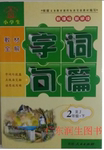题目内容
D
Mary Cassatt is one of the first great women American painters. At first her father did not want her to become an artist. But she followed her dreams and became an artist. She was born on
May 22, 1844, and lived in Europe for several years as a child.
Her family returned to the United States and, at age 16, Mary attended the Pennsylvania Academy of Fine Arts. Four years later she decided she couldn't learn anything fresh and practical in Philadelphia, so she returned to Europe. There she studied the skills of the masters in Rome, Seville, Antwerp, and Paris.
Mary received the chance of a lifetime at the age of 33 when the famous French painter, Edgar Degas, asked her to join a group of painters that included now-famous artists like Manet and Renoir. Their style of painting is called Impressionism. They used primary colors and short brush strokes(笔画) in their work. They recognized Mary 's spirit and powerful talent and invited her to exhibit in the Impressionist art shows.
Mary painted what she saw: gardens, and paintings of persons , especially of mothers and children involved in everyday living. One of her paintings, "Young Mother and Two Children," was given to the White House in 1954 where it hangs today.
Mary never married and, in 1877, her parents and sister moved to Europe to join her. Mary devoted much of her time to them for the next 18 years to their care. Mary painted until 1914 when her failing eyesight made it impossible to continue. She spent the later years of her life in Paris. She died in 1926 at the age of 82. Unfortunately, all her life, she refused to accept students.
1. Which year was the most critical to her career and life?
A. 1877 B. 1864 C. 1860 D. 1914
2. Mary left Pennsylvania for Europe at age 20 mainly because_____.
A. she didn’t learn anything in Pennsylvania
B she wanted to learn another style of paintings
C. her desire for the learning wasn’t satisfied well
D. her father didn’t want her to learn painting again
3. Mary Cassatt stopping painting because of_____.
A. her poor eyesight B. her old age C.lack of interest D. her family
4. Which of the statements about Mary Cassatt is supported by the passage?
A. Her painting featured scenes of everyday living
B. Her father had a decisive effect on her painting
C. She used various colors and long lines in her works
D. She studied the paintings of the masters in U.S.A
5. It can be inferred from the passage that _____.
A. the paintings of Edgar Degas belong to realism
B. during the last ten year of life, she painted nothing.
C. her works were controversial though highly recognized
D. her students showed great respect for her
ACAAB

 教材全解字词句篇系列答案
教材全解字词句篇系列答案